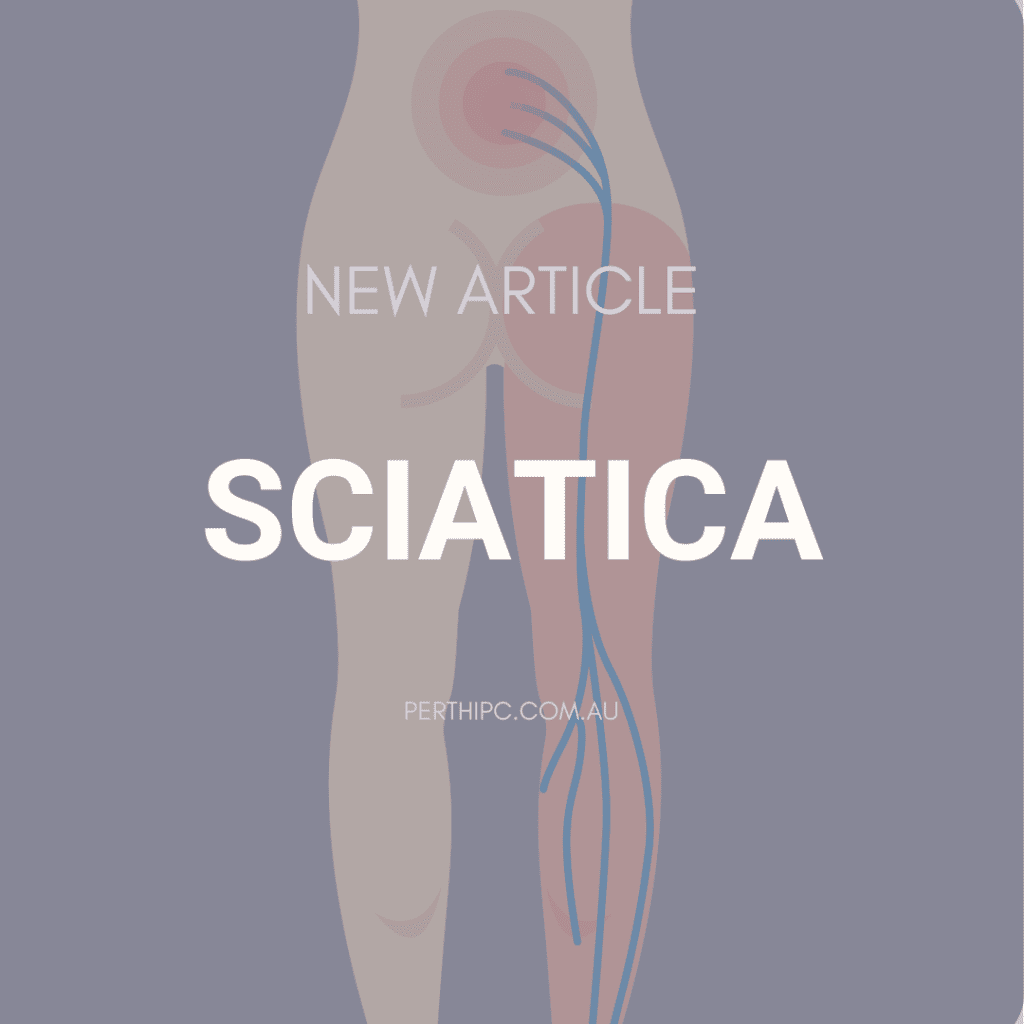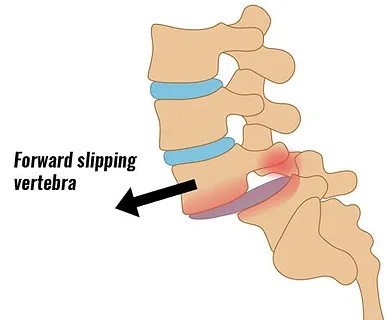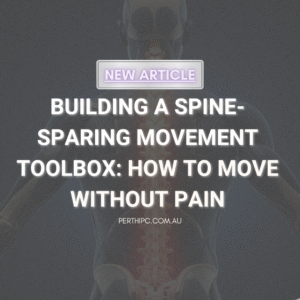
The Importance Of Spare Capacity – Why Your Spine Needs A Safety Margin
What if your back pain isn’t just from one bad movement — but from constantly living on the edge of your spine’s limits? This is


he first thing to understand is that Sciatica is a symptom – not a diagnosis! We here it all too commonly in clinic that patients walk in say they have been told they have sciatica. There are many causes of sciatica, which we will discuss further in this article.

The sciatic nerve is the largest nerve in the human body and is formed by the merging of nerve roots in the lower back, specifically from the spinal cord segments L4 to S3. The nerve then travels through the pelvis, behind the hip joint, and down the back of the thigh, where it divides into the tibial and common peroneal nerves.
The sciatic nerve is composed of several smaller nerves that branch off from the spinal cord, including the nerve roots from the lumbar and sacral regions. These smaller nerves combine to form two main components of the sciatic nerve: the tibial nerve and the common peroneal nerve.
The tibial nerve is the larger of the two branches and continues down the back of the leg, supplying the muscles of the calf and the sole of the foot. The common peroneal nerve, on the other hand, wraps around the outer side of the knee, then divides into the deep and superficial peroneal nerves, which supply the muscles and skin on the front and outer side of the leg and foot.
The sciatic nerve is responsible for providing motor and sensory function to the leg and foot. The motor function allows for the movement of the leg muscles, while the sensory function provides the ability to feel sensations, such as touch, temperature and pain, in the leg and foot.
Due to its size and location, the sciatic nerve can be easily compressed or irritated, resulting in the painful condition known as sciatica. Sciatica often results in pain, numbness, and weakness in the leg and foot.
It is typically diagnosed based on the presence of radiating pain in one leg, with or without the associated neurological deficits of paraesthesia and muscle weakness, which are the direct result of sciatic nerve pathology.
Sciatica can affect people of all ages, but it is most common in adults between the ages of 30 and 50. It is also more common in people who have jobs that require heavy lifting, twisting, or sitting for prolonged periods of time, such as construction workers, truck drivers, and office workers. Other factors that may increase the risk of developing sciatica include obesity and a sedentary lifestyle (Parreira et al., 2018).
Sciatica affects both men and women equally and can occur on one or both sides of the body. People who have a history of back problems, such as a herniated disc or spinal stenosis, are also at increased risk of developing sciatica.
Sciatica can be caused by a variety of factors, including:

2. Spinal Stenosis: Spinal stenosis occurs when the spinal canal narrows and puts pressure on the spinal cord and/or the sciatic nerve. This can be due to arthritic bone spurs in or around the spinal canal; Thickening of the ligaments of the spine: Or in some cases, a space-occupying tumour

3. Spondylolisthesis: Spondylolisthesis is a condition in which one vertebra slips forward over another, which can put pressure on the sciatic nerve. There are 2 types of spondylolisthesis, Isthmic (which results from a fracture of the bony elements at the back of the spine) and degenerative (loss of integrity of the facet joints in the spine).

4. Piriformis Syndrome: The piriformis muscle, located in the buttocks, can sometimes compress the sciatic nerve, leading to sciatic pain. NOTE: piriformis is often wrongly diagnosed, with reports suggesting that ‘true’ piriformis syndrome is responsible for 0.3-6% of sciatica. So it is far more likely to be a spinal problem.

The most common symptom of sciatica is pain that radiates from the lower back down the leg, often to the foot. The pain may be described as sharp, burning, or shooting and may be accompanied by other symptoms such as:
The location and severity of the pain can vary depending on which part of the sciatic nerve is affected. For example, if the L4 nerve is compressed or irritated, the patient feels pain, tingling and numbness in the thigh. If the L5 nerve is compressed or irritated, the pain, tingling and numbness may extend to the foot and big toes. If the S1 nerve is compressed or irritated, the pain, tingling and numbness may be on the outer part of the foot. Weakness when elevating the heel off the ground and standing on tiptoes can also be present (Konstantinou et al., 2012).

Treatment options for sciatica will vary depending on the underlying cause of the condition. Which again is why a thorough assessment to identify the mechanism(s) at play so that the correct treatment/rehab can be provided.
The first step in the treatment is to avoid ‘pain triggers’ that cause pain and sensitise tissues, like discs, nerves etc. This includes modifying many common movements, like putting on shoes, getting on and off the floor, walking etc. Then, building movement proficiency to improve the functional capacity of perform ADLs and other important tasks without aggravating the sciatic nerve.
From there, exercise rehab involving exercises specifically selected to your situation, mechanism(s) and goals. These are targeted around building spinal stability. The goal is to build pain-free foundation for movement and get you back to engaging in the things you love to do.
Other modalities that may be beneficial as adjunctive with the above mentioned include;
Soft Tissue Occupational Therapy: Soft Tissue Occupational Therapy is a key treatment option for sciatica. It starts with a thorough diagnosis to determine the root cause of the problem, this will then guide the required treatment and rehabilitation required such as; movement education, spinal stability exercises, movement proficiency etc. It may also be used to help prevent future episodes of sciatica by addressing any underlying issues that may be contributing to the condition.
Pain Medications: Over the counter or prescription pain medications, such as nonsteroidal anti-inflammatory drugs (NSAIDs), can help to reduce inflammation and alleviate pain.
Heat Therapy: Applying heat to the affected area can help to increase blood flow and may assist with reducing pain and inflammation.
Epidural Steroid Injections: In some cases, a healthcare provider may recommend an epidural steroid injection, which involves injecting a corticosteroid medication into the area around the spinal nerve to reduce inflammation and alleviate pain.
Surgery: In rare cases, surgery may be necessary to relieve pressure on the sciatic nerve. Surgery may be considered if conservative treatments have not been effective, or if the condition is severe and causing significant impairment or disability. In some cases, surgery may be recommended for treating sciatica.
In conclusion, sciatica is a common condition that can cause pain, numbness, and weakness in the lower back, hips, and legs. It is typically caused by compression or irritation of the sciatic nerve, which runs from the lower back down through the hips and legs. There are many potential causes of sciatica, including herniated discs, spinal stenosis, degenerative disc disease, and pregnancy.
Thankfully, most cases of sciatica can be effectively treated with non-operative measures. In severe cases, surgery may be necessary to relieve pressure on the nerve. The fundamental step is to identify the mechanism or root cause of the sciatica as this will guide the treatment required. It is important to work with a healthcare provider to develop an individualized treatment plan that is tailored to your specific needs and goals.
References
Parreira P, Maher CG, Steffens D, Hancock MJ, Ferreira ML. Risk factors for low back pain and sciatica: an umbrella review. Spine J. 2018 Sep;18(9):1715-1721. (Parreira et al., 2018)
Konstantinou K, Lewis M, Dunn KM. Agreement of self-reported items and clinically assessed nerve root involvement (or sciatica) in a primary care setting. Eur Spine J. 2012 Nov;21(11):2306-15. (Konstantinou et al., 2012)
If you have been dealing with sciatic-type issues and want to actually identify the root cause and fix this issue once and for all, then contact us to get onto the road to recovery!

What if your back pain isn’t just from one bad movement — but from constantly living on the edge of your spine’s limits? This is

One of the most overlooked causes of persistent low back pain is how we move during everyday tasks. Simple activities like bending, sitting, getting out of a car, or

If you’ve been told your back pain is “non-specific” or has “no clear cause,” you’re not alone. Up to 85% of people with low back